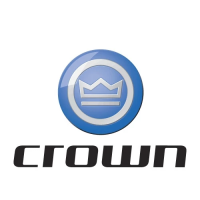LIFTING MECHANISM
Mast
328
M7.0-1055-008
02 Rev. 5/08
Wear appropriate items, such as safety glasses and
steel-toed shoes whenever performing maintenance
work. Do not place fingers, hands or arms through
mast or position them at pinch points.
In this section you may be required to lift and block the
truck and mast or raise and lower different components
for removal and installation. Make sure lifting device
and sling are sufficiently rated to withstand the weight
being lifted. Never work under or around a truck that is
not properly secured. Refer to truck Data Plate for truck
weight information.
It will be necessary to disconnect and remove the bat-
tery from the truck, disconnect tilt cylinders from the
mast, disconnect electrical connections and hydraulic
lines. "Control of Hazardous Energy" section provides
information for performing the above procedures along
with some additional information on other procedures
dealing with truck maintenance. This section should be
read and reviewed prior to mast removal, installation
and maintenance as outlined in this section.
Be sure all stops and safety devices are in place before
cycling mast to check for proper operation.
Quad (Four Stage) Mast
The quad is a four stage mast assembly providing a
high lift height while maintaining a low collapsed height.
The quad incorporates two mast cylinders and one car-
riage cylinder. The fork carriage assembly ascends
completely to the top of the mast as the carriage cylin-
der is completely extended. As the carriage reaches
the top of the mast, it contacts a pair of stops. At this
time the two mast cylinders begin to extend and the
inner, 3rd and 2nd stage masts begin to ascend. A pair
of lift chains are attached to the bottom of the inner
stage and to the top of the 2nd stage mast. Another
pair of lift chains are attached to the bottom of the 3rd
stage and to the top of the outer mast. These lift chains
are routed through pulley assemblies mounted in the
top of the 2nd and 3rd stage masts.
The carriage cylinder is mounted to the inner stage
mast with mounting hardware at the base and to the
center crossbrace on the inner mast. Lift chains are
routed from the back of the cylinder through a yoke as-
sembly to the back of the carriage assembly.
Two tilt cylinders are used for all tilt operations and are
attached to the power unit and outer mast.
Mast Flaking
It is not uncommon for a new mast to appear as if it is
flaking or peeling. This appearance is an indication that
the rollers are seating to the mast channel and is con-
sidered normal. Eventually, this condition will disap-
pear. The grease applied to the channel will retain
these particles. If flaking continues, column rollers
should be checked to see if they need to be
reshimmed.
Mast Testing (Assembled)
With the mast assembled, there are some tests that
can be made to verify that column rollers are riding cor-
rectly.
• Inspect each channel on outer mast for roller track-
ing path. The only area that should show wear is
the flange of the channel where the roller rides, re-
fer to Figure 16947. The channel should not show
signs of any cutting or grooving. If grooving or cut-
ting is evident, it will normally take place at the side
of the roller, 10 mm (0.375 in) from the channel
flange. If this type of wear is evident, a shim will
have to be removed. Full surface scuffing is also a
sign that too many shims are installed.
• Roller tracking is different on 2nd, 3rd and inner
mast of quad mast. Rollers are mounted parallel to
web and rubbing on small raised portion of web is
normal.
Figure 16947
Channel Should Only Show Wear Here
Crown 2007 PF15690-8 Rev. 5/08

